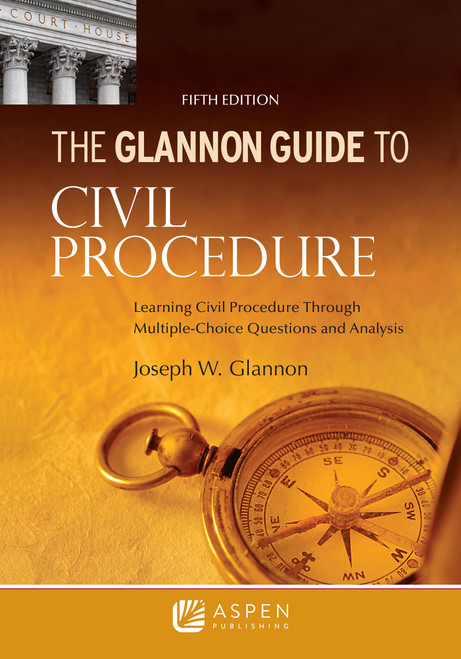Now there is a civil procedure litigation supplement that makes the rules accessible without talking down to students. AN ILLUSTRATED GUIDE TO CIVIL PROCEDURE achieves the perfect balance between complexity and simplicity as it reveals the actual operation of the principal rules studied in the first-year course.
The authors pack their book with advantages for students and instructors:
a realistic hypothetical age discrimination case is used as a vehicle for studying the procedural rules in action. It carries students from a client's initial visit with a lawyer through trial and ultimate resolution of the case.Exploration of most procedural rules examined in both one- or two-semester courses such as rules related to pleadings, motions, discovery, joinder, pretrial disposition, and trialpresents a strong first introduction to some of the principles of professional responsibility that apply in civil litigation allows students to actively participate in the litigation process by making strategic and tactical litigation decisions and by reviewing and critiquing illustrative common litigation documents, such as complaints, answers, motions, discovery papers, and judicial ordersuniquely visually appealing text uses a variety of devices -- such as tables, question sets, student tasks, maps, and other illustrations -- to bring the material to lifedesigned for use as an in-class required text to supplement the instructor's materials, the book can also serve as an out-of-class reference for independent studyequally useful in courses that begin with the study of jurisdiction or the rules of pleadinga comprehensive Teacher's Manual provides guidance and supporting materials Be sure to notice these functionally and visually distinct features:
Rule References at the beginning of each chapter cite all rules to be discussed clear litigation documents offer simple yet realistic examples of documents pertaining to most of the major topicsreal litigation tasks that engage the student in both prosecution and defense interspersed throughout each chapternumbered question sets within each chaptertactical tips to share conventional litigation wisdomsuccinct notes conveying information that reinforces the texttables summarizing important procedural information


![Civil Procedure: A Coursebook [Connected Casebook] (Aspen Casebooks) Civil Procedure: A Coursebook [Connected Casebook] (Aspen Casebooks)](https://cdn11.bigcommerce.com/s-rr0pkl7rnl/images/stencil/500x659/products/117588/228126/41uKbvTm43L__27059.1727783920.jpg?c=1)







